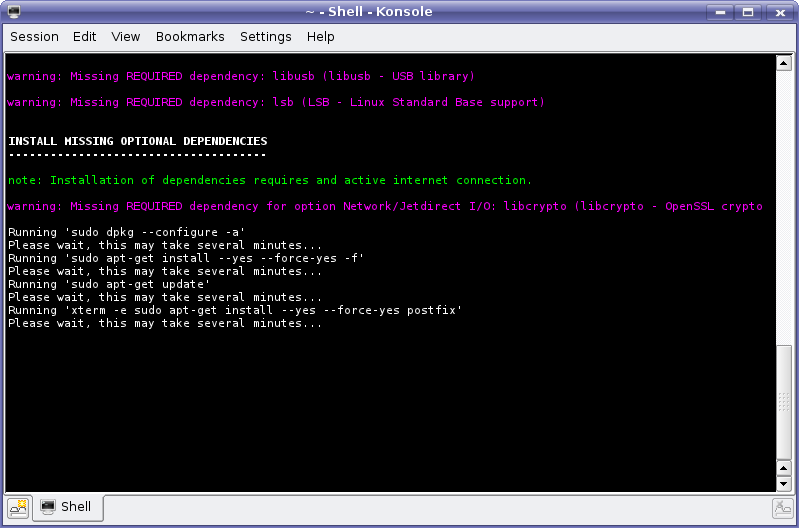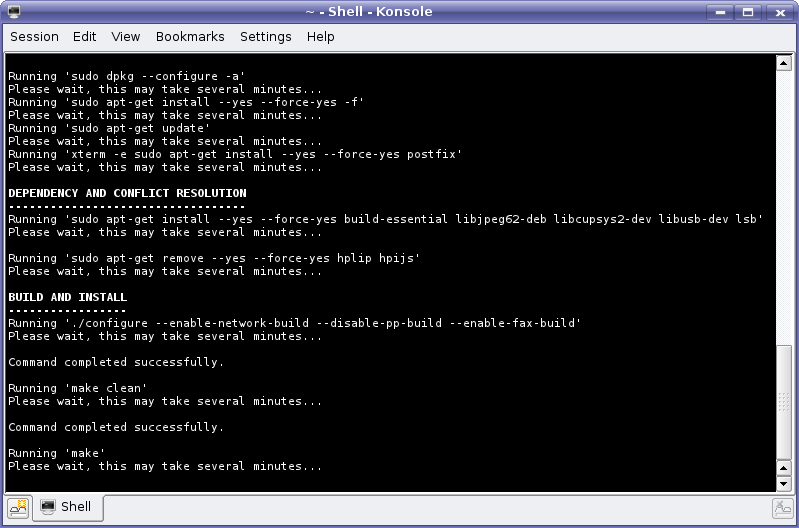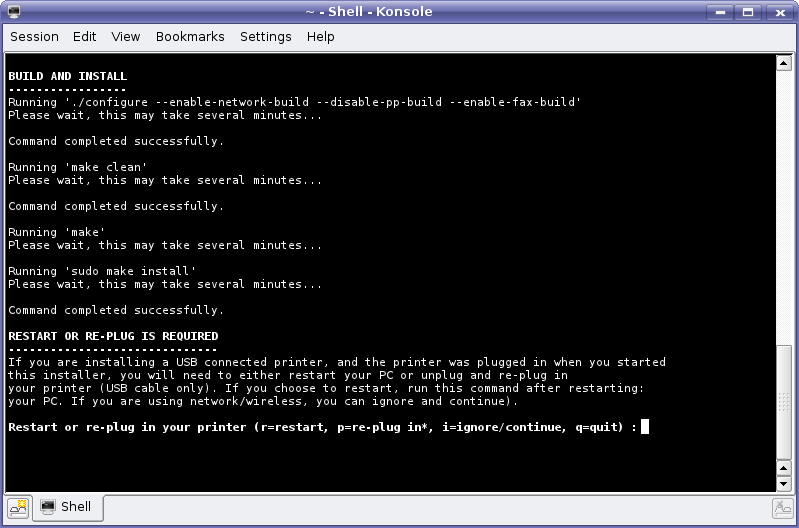Step 1: Download the Automatic Installer (.run file)Download HPLIP 3.24.4:
Step 2: Run the Automatic Installer
Running the installer requires that you open a command shell to enter commands. To do this, open a terminal or console window (how do I open a terminal?).
In the terminal/console, enter the following commands (type all the text after the $ character and then press enter):
Note:
These instructions assume that the hplip-3.24.4.run file was downloaded to your Desktop directory. You may have to adjust the 'cd' command based on where your web browser saved the file on your system.

Step 3: Select the Install Type
Select the install mode: Automatic (enter an 'a') or Custom (enter a 'c'). We recommended that most users select the Automatic install mode (what settings does automatic install mode use?)

Step 4: Verify your Linux Distribution
Note:
Ensure the installer detected the correct Linux distribution. Different Linux versions use different install procedures if the incorrect version is selected, the installer may fail.

Step 5: Enter Your root/Superuser User Password

Step 6: Read the Installation Notes
Depending on your Linux distribution some steps may need to be completed before going further with the HPLIP install. Please follow any directions given.

Step 7: Detect Any Missing Dependencies
The installer will now detect what dependencies your system will need to install before installing HPLIP. In addition any package manager clean up steps will be ran. These are executed to try and minimize any potential package manager problems.

Step 8: Download and Install Any Missing Dependencies
If your system is missing any dependencies they are now downloaded and installed.

Step 9: './configure' and 'make' will run
./configure prepares HPLIP for install as well as your system is verified to have all the required dependencies for HPLIP.
'make' is then executed. Make compiles ("builds") HPLIP for your system.

Step 10: 'make install' is Run
'make install' is the actual install procedure, this step is where HPLIP is actually being installed to your system.

Using 'hp-setup' to configure your printer
This guide will walk you through configuring your printer using 'hp-setup'.
Step 11: Select How Your Printer will be Connected to Your Computer
The first step is to select the printer connection type:

Step 12: Select the Printer to be Configured
Next the setup tool will display printers detected (depending on the connection type selected):

Step 13: Select the PPD file (or driver) to be Used for Your Printer
The PPD files (drivers) which are most similar to your printer are displayed. Select the appropriate PPD file for your printer.
Note:
Usually you will want to select the recommended PPD file.

Step 14: Confirm the Printer Settings and Finish the Configuration Process
Click "AddPrinter" to complete the printer setup process:






